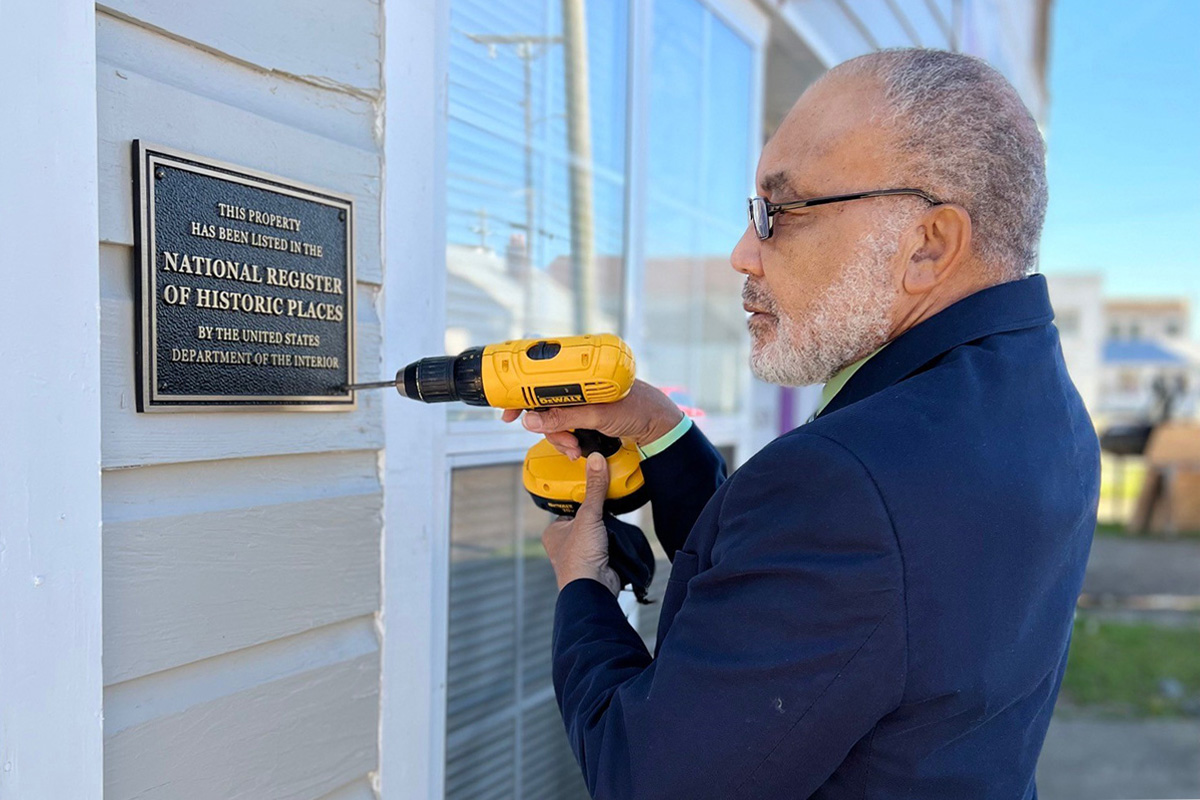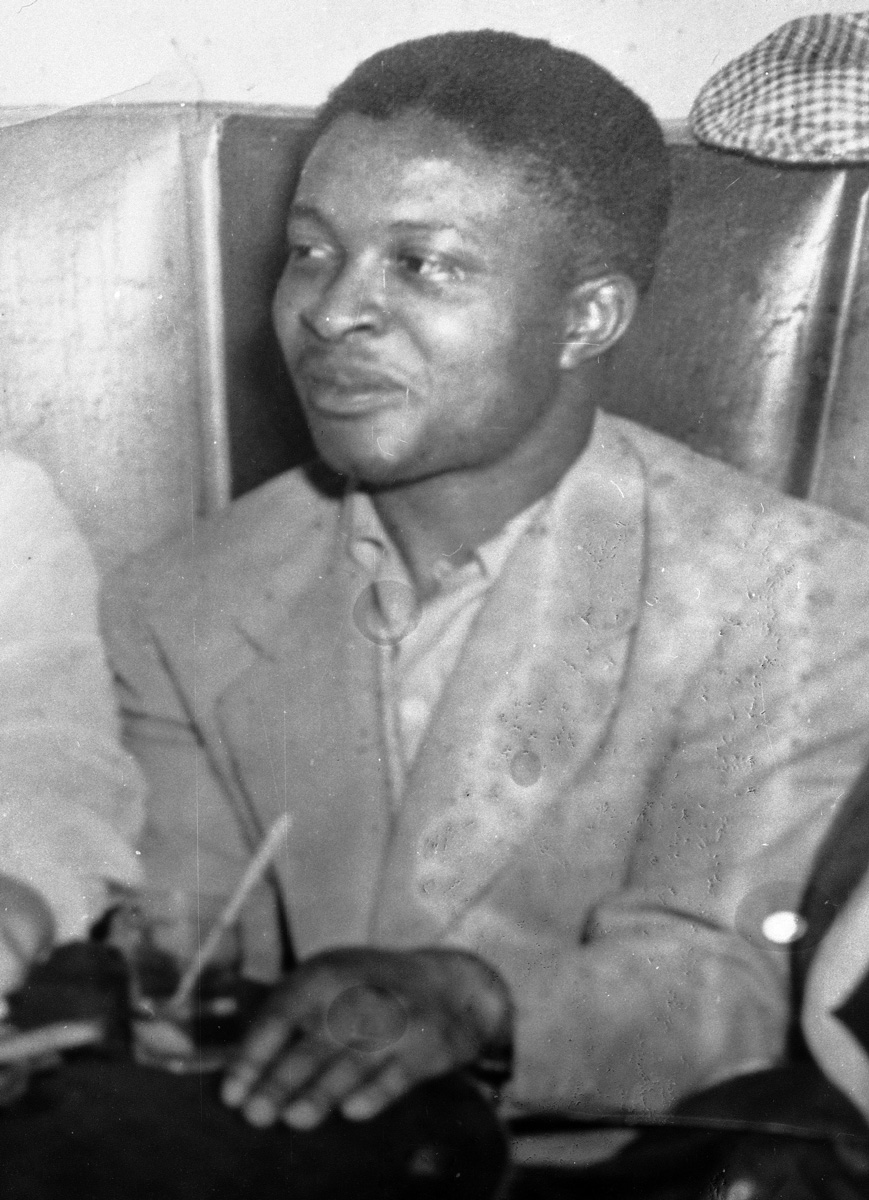
The night of Feb. 27, 1967, Wharlest Jackson Sr. left his job at Armstrong Rubber and Tire Company in Natchez, Miss., tired from a long day after his first shift in his new position. Jackson had been promoted over two white applicants, and the position came with a 20-cent-an-hour raise and a better schedule.
Jackson and his co-worker, George Metcalf, also were treasurer and president, respectively, in the NAACP. Their workplace had functioned under Jim Crow segregation rules, like many places of employment at the time. However, Jackson and Metcalf pressured Armstrong to end segregated conditions until they finally succeeded, resulting in the company starting to hand out promotions regardless of race.
But that victory didn’t come without consequences in an area where many white workers at plants like Armstrong and International Paper in southwest Mississippi were associated with the Ku Klux Klan, which was extremely violent and active in the region. On Aug. 27, 1965, shortly after receiving a promotion, George Metcalf got into his car, turned on the ignition, and the Chevrolet truck exploded without warning. Metcalf survived the bombing, but suffered extensive injuries.
Bombings then were a favorite tool of the Ku Klux Klan in South Mississippi.
Jackson, 36, would not be as lucky as he drove to his nearby North Natchez home after work the evening of Feb. 27, 1967. His wife was home cooking dinner; he had four daughters and an 8-year-old son, Wharlest Jr., who heard the blast from the front yard. His father made it to the corner of Martin Luther King Jr. Street and Miner Street before his truck exploded from a bomb placed under the hood. He died instantly.

The explosion was so loud that people across the small city heard.
“That’s Jackson! That’s Jackson!” Denise Ford, Jackson Sr.’s daughter, said, describing her mother Exerlena screaming. “She knew that was her husband, and he got bombed. She went to the hospital and tried to find him.”
Ford said she was 9 years old at the time, so her memory of that night is fairly vague. She recalls her mother gathering her and her siblings to head to the hospital as rain poured from the night sky.
“Once she made it to the hospital, she went in, and she was trying to find him,” Ford told the Mississippi Free Press. “They told her she was not allowed and for her to get out, but she was persistent in trying to find out where he was.” Following a trail of blood on the floor, Ford’s mother eventually found Jackson Sr. and learned he had passed.
When her mother delivered the news of her father’s passing, a deeply sad Ford thought of how she would never see her father again.
“When he would get off, we would sit on the front porch and play jacks,” Ford said, reflecting on her memories of Jackson Sr. “He was a family man. He worked three jobs to make ends meet to try to support the family. He was a lovable, friendly person—just a good family man.”
Ford said that law enforcement made no arrests for the murder of her father, although rumors swirled that the man responsible died in the late 1980s. Even when the FBI intervened, they only came in to assist with local authorities, a devastating blow for a family left without a father, husband and provider.
Enter the ‘Deacons for Defense’
After the attempt on George Metcalf’s life in 1965, James Jackson, a local barber at Donnan’s Barbershop, had founded a chapter of the Deacons for Defense and Justice in Natchez. A group of Black men founded the original organization in Jonesboro, La., under the leadership of Earnest “Chilly Willy” Thomas and Frederick Douglass Kirkpatrick on July 10, 1964, to protect local Black people, churches and businesses, as well as civil-rights workers, against Ku Klux Klan violence.
The frequently armed Deacons’ second chapter in Bogalusa, La., protected local African Americans trying to register to vote, as well as both Black and white civil-rights workers.

The Deacons also provided security for the March Against Fear in 1966. One of the first visible Black self-defense forces in the South, the Deacons represented a more direct and armed self-defense approach, in contrast with the non-violent tenets of the Civil Rights Movement in Mississippi and Louisiana where white terrorism was expecially vicious with no end in the site in the mid-1960s.
Many people in the Natchez chapter of the Deacons were also NAACP members, war veterans and Natchez natives who had grown up together. The group functioned in secret, hiding information like the size of the group and its tactics from the Klan, and its full role in southwest Mississippi has emerged just in recent years, although the role the Deacons played in the region has long been passed down by word of mouth.
Natchez native and activist Clifford Boxley learned of the Deacons for Defense after his return to the city in 1965. He was visiting his mother and attempting to drop off some artifacts before moving to Africa. His visit, however, coincided with George Metcalf’s attempted assassination, halting his plans.
“That galvanized the community, and young people were out in the streets demonstrating,” Boxley told the Mississippi Free Press. “The Ku Klux Klan was very visible. On one side of Franklin Street, the Black Civil Rights Movement people, and on the other side of the street, the Ku Klux Klan. Everybody had guns or some kind of defense.”
Boxley said he attended the meetings for the Deacons for Defense and found that they were in need of equipment and weapons. Boxley said it was natural for him to lend a helping hand to the Deacons due to his own social-justice work with the Nairobi Rifles in San Mateo County, Calif., a self-defense organization to fend off hate groups like the Ku Klux Klan that existed there.
“I take two of them with me to California … and I toured them around the San Francisco Bay area,” Boxley said of the Deacons. “(I) take them to churches. I take them to San Mateo Junior College, where I’m a student. They go in front of supermarkets, put out tables, and they spread the word of what’s going on in Natchez, the Deacons and what their purpose is.”
After gathering weapons and money, the Deacons drove back to Natchez in a 1957 used Oldsmobile that Boxley gave them. “They (were) able to hit the streets, full capacity, to checkmate the Klan, the police and other white council-type oppressors that had been oppressing Black folks,” he said.
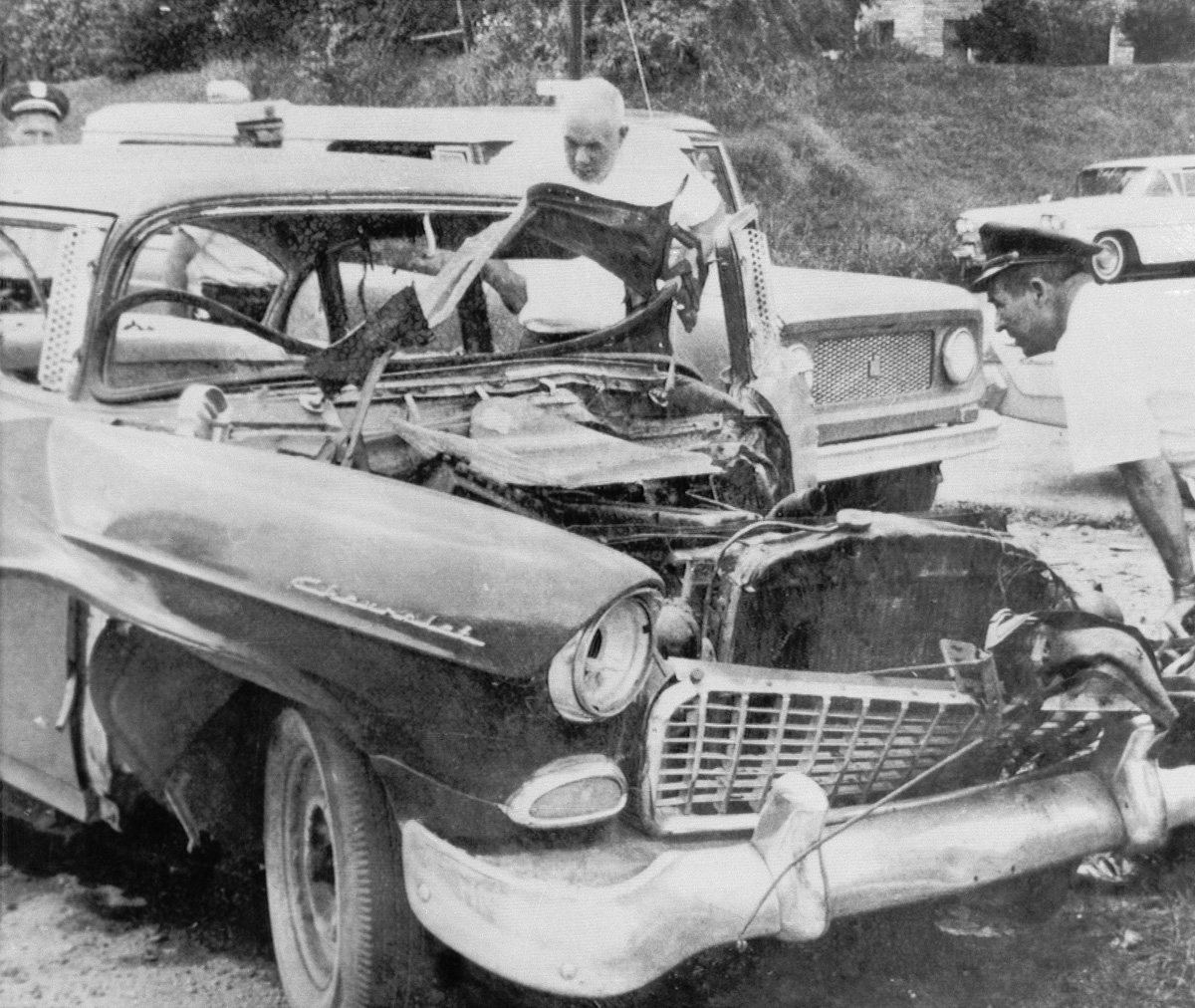
Most of the Deacons for Defense members at the time, Boxley recalled, were NAACP members, Korean War and World War II veterans or young people. Many had grown tired of going to places and being met with violence from white people or having night riders and day riders come into the community to harass them, he said.
“They’re tired of it,” Boxley said. “You go and sit at the counter or some other place and get your head beat by whites … hoping, as non-violent, that you can attract national attention and that the federal government will send federal agencies and FBI and other kinds of law-enforcement agencies into the community and make it better or help with gaining civil rights.”
But that strategy wasn’t working in Natchez, across the state or in Louisiana. In Natchez, the Deacons had a three-prong approach to what a successful Black freedom movement could look like. The first step was armed resistance, which came in the form of the Deacons for Defense—that is, fight back since the non-violence civil-rights approach wasn’t working.
“That put a stop to white terrorists, Ku Klux Klan behavior, murder, intimidation and that brought about some stability in the civil-rights community,” Boxley said.
The second pillar was an economic boycott of white businesses in Natchez, and the third was forcing Black people to honor the boycott. Other activists replicated this model in Port Gibson, Woodville, Hattiesburg, the Delta and in Louisiana, he explained.
“It puzzles the hell out of me how Black folks and white folks can do all of that honoring of the Martin Luther King (Jr.) approach and Martin Luther King (Jr.) and ignore all of the local people and the history of the local people who made civil rights possible for people who live here everyday,” Boxley said.
‘From the Mouth of Leon Donnan’
Donnan’s Barbershop served as a common meeting place for the Natchez Deacons for Defense and Justice chapter. Willie Carter rose from shoe shiner to barber, working alongside James Jackson, the leader of the Deacons for Defense, Carter told the Mississippi Free Press.
Cops had severely beaten Bill Ware, breaking his jaw and ultimately putting him in the hospital. Ware landed on the doorstep of the barbershop after the altercation. This incident, combined with George Metcalf’s attempted assassination and other violent acts, compelled James Jackson to fight back.
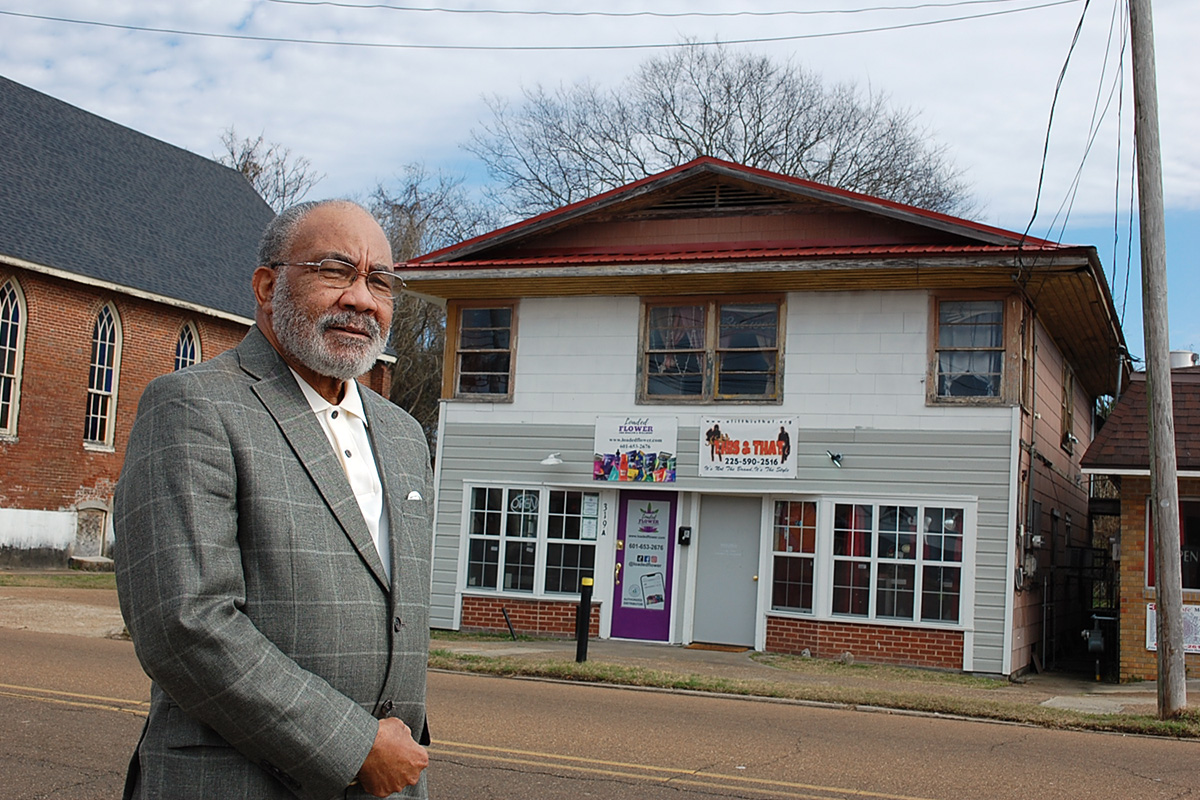
“They organized a group called the Deacons for Defense, and that shop is where they originated,” Carter said.
The building holds a wealth of history. Not only was it the meeting place for the Deacons for Defense, but it was also the location for the first Council of Federated Organizations meeting and the building that housed the first Black local library in Natchez.
The barbershop is a three-part building, and the Deacons would periodically meet in room C, Carter said. Clifford Boxley said he worked at the barbershop before moving to California and made frequent visits to the shop when he would visit Natchez.
“Most people don’t know that James Jackson, the president of the original Deacons for Defense (in Natchez), was a barber in Leon Donnan’s barbershop,” Boxley said. “Most of the tactics, the strategies, the analyses of what needs to be done came from the mouth of Leon Donnan, the owner of the barbershop.”
Leon Donnan passed away in 1992, and the shop closed for two years. Carter left Natchez to pursue his education, but he eventually came back and reopened the shop, renting it from Donnan’s children. The children lost the building, but Carter was able to purchase it from the state, and it has been in his possession ever since, he said.
Carter said he had been looking into options to get the barbershop recognized as a way to honor Leon Donnan, his mentor, and because it holds so much history.
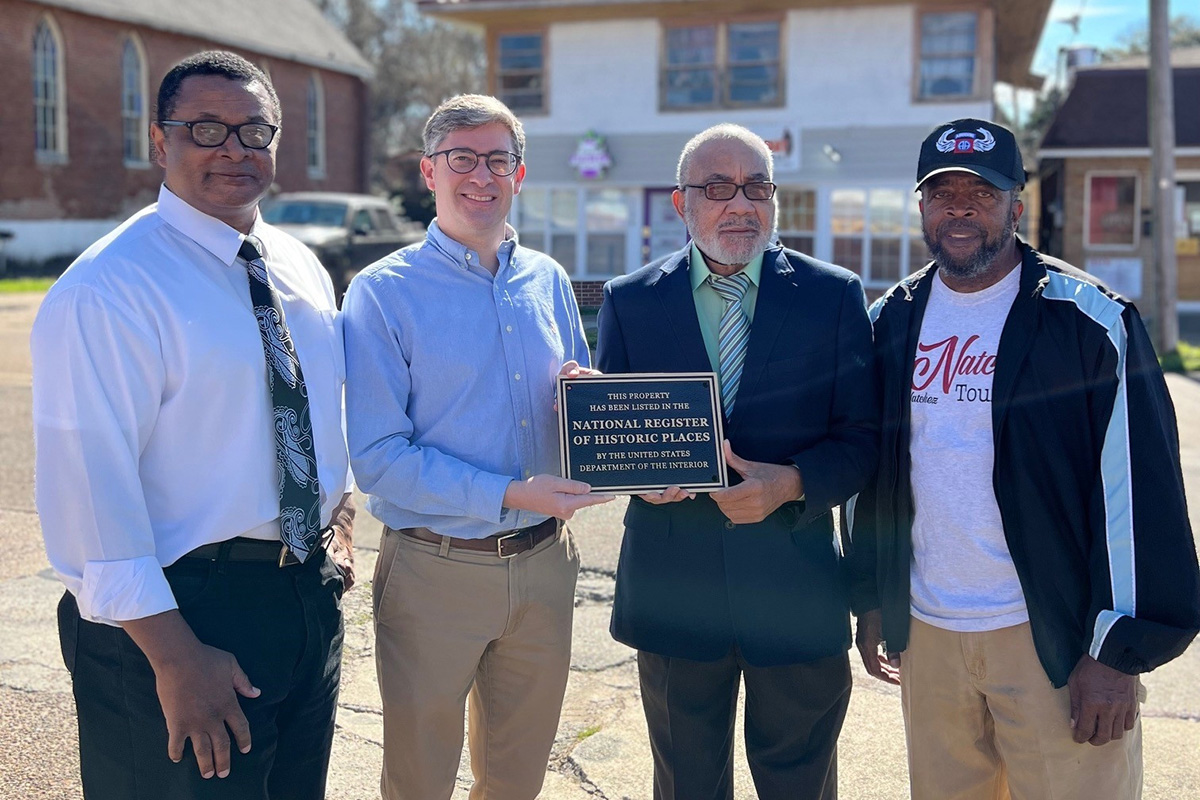
“I wanted him to be recognized, and I had been working on this before they lost it. I was working on getting a marker,” Carter said.
The business owner no longer has to wait for that honor, though, since the building has now been added to the National Register of Historic Places. Carter had the honor of drilling the plaque outside the building himself.
“People know about that building, and it’s just not a building that is sitting there—that building is history, great history,” Carter said.

